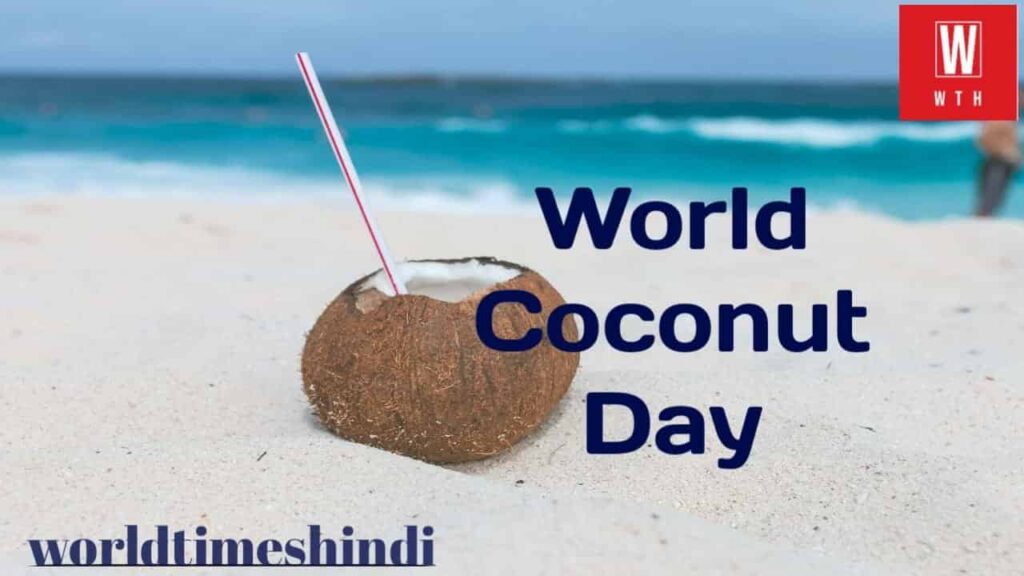
Introduction
Ah, the humble coconut! It’s not just a fruit; it’s a versatile powerhouse that has been a part of our lives for centuries. On this World Coconut Day, let’s explore the fascinating history, health benefits, and unique uses of this tropical wonder. Grab your coconut water and let’s get started!
History of World Coconut Day
World Coconut Day isn’t just an excuse to sip piña coladas (although that’s a valid reason too!). It’s an international day established by the Asian and Pacific Coconut Community (APCC) to recognize the importance of coconuts1. The APCC, an intergovernmental organization of coconut-producing countries, initiated this celebration in 2009. Since then, every September 2, coconut enthusiasts worldwide come together to honor this remarkable fruit.
The Coconut’s Origins
But first, let’s talk about the coconut’s origin story. Picture this: ancient Iberian folklore, Portuguese and Spanish explorers, and a fruit with three mysterious indentations on its surface. These indentations resembled a human face, and the explorers playfully named it “Coco,” after a mythical bogeyman from their native tales. And thus, the word “coconut” was born! 🌟
The coconut tree (scientifically known as Cocos nucifera) likely originated in India and Southeast Asia. Over time, it spread across warm climates worldwide, from the Caribbean to the South Pacific, Africa, and beyond. The coconut palm, often called the “tree of life,” offers us a bounty of resources: coconut water, coconut milk, coconut oil, and even materials for building huts and making mats2.
Timeline of Coconuts
Let’s hop on our coconut-powered time machine and explore key moments in the coconut’s journey:
- 3000 BC: Early Cultivation in Southeast Asia
- Genetic studies suggest that coconuts were domesticated in regions around Southeast Asia or the Pacific. People recognized their value long before coconut water became a trendy beverage.
- 1500s: Coconuts Go West
- During the Age of Exploration, Portuguese and Spanish explorers brought coconuts back to Europe. Imagine those sailors sipping coconut water on their long voyages!
- 1280: Marco Polo’s Encounter
- Marco Polo, the legendary traveler, encountered coconuts during his adventures in Sumatra. He referred to them as “nux indica,” or the “Indian nut.”
- 1951: Coconut in Chocolate
- Coconuts found their way into chocolate bars, adding tropical flair to our sweet indulgences.
Health Benefits and Uses
Now, let’s crack open the coconut (figuratively, of course) and explore its health benefits:
- Coconut Meat: The edible white flesh inside the coconut is rich in nutritious fats. It’s used to create coconut oil, coconut cream, and coconut milk. Plus, you can enjoy it fresh or dried (known as copra).
- Coconut Oil: Beyond the kitchen, coconut oil is a staple in beauty products. It moisturizes skin, conditions hair, and even removes makeup.
- Coconut Water: Nature’s sports drink! It’s hydrating, packed with electrolytes, and perfect for post-workout recovery.
- Coconut Husk (Coir): Ever seen those doormats made from coconut fibers? Yep, that’s coir! It’s also used for ropes, mats, and even eco-friendly plant pots.
Conclusion
Next time you sip coconut water or sprinkle shredded coconut on your curry, remember the incredible journey of this tropical delight. Happy World Coconut Day! 🌴🎉
FAQs About Coconuts
Q.1 Can coconut oil really reverse dental decay?
Some enthusiasts claim swishing coconut oil in your mouth for 20 minutes daily can work wonders. While it’s not a substitute for regular dental care, it won’t hurt to try!
Q.2 Is the coconut a nut?
Surprisingly, no! Botanically, it’s a drupe—a fruit with a hard outer covering and a seed inside. So, it’s more like a peach than an almond.
Q.3 What’s the deal with coconut flour?
Coconut flour, made from coconut, is high in dietary fiber. It’s a gluten-free alternative for baking.
Source




[…] World Coconut Day – September 2, 2022, history, quotes […]